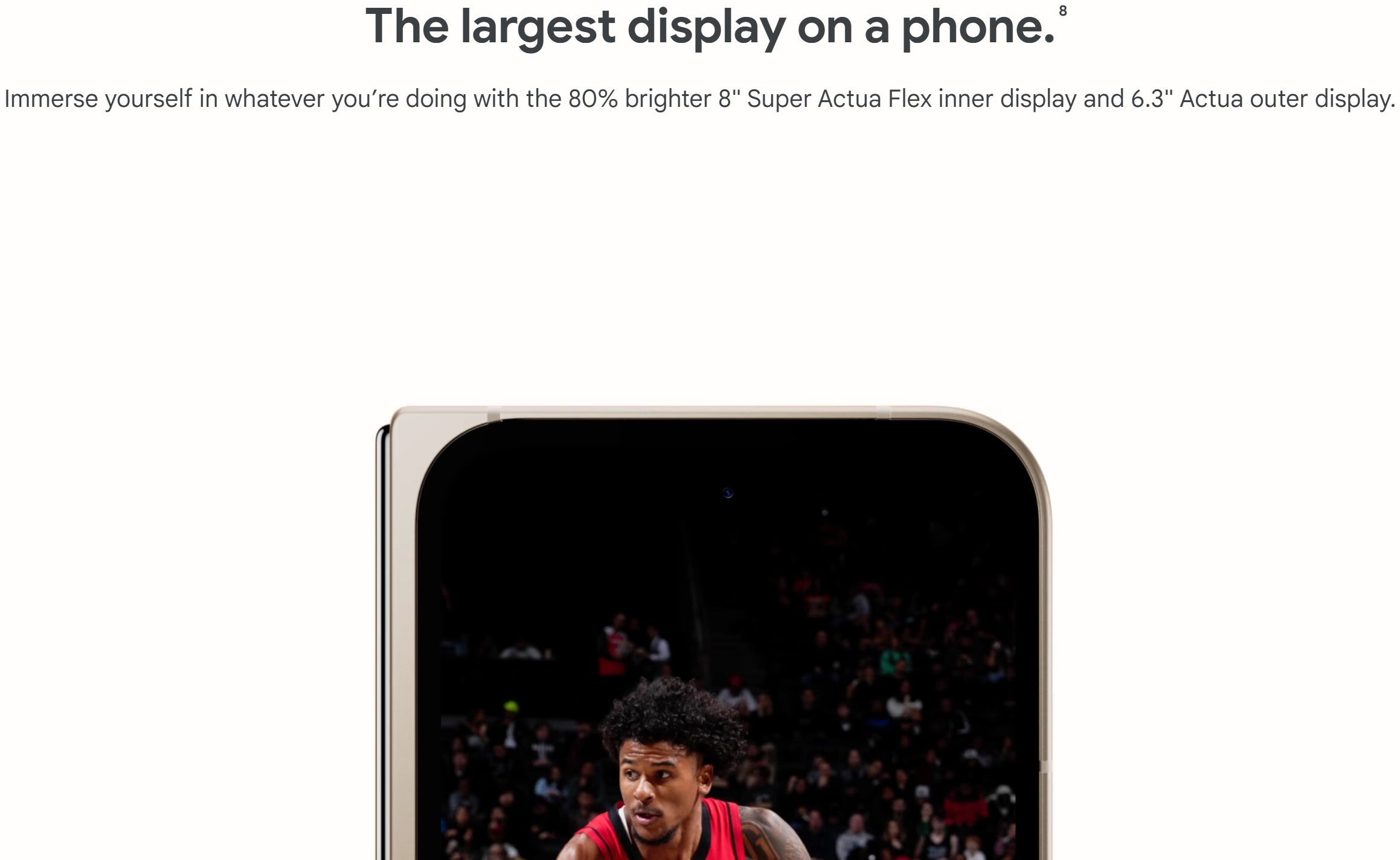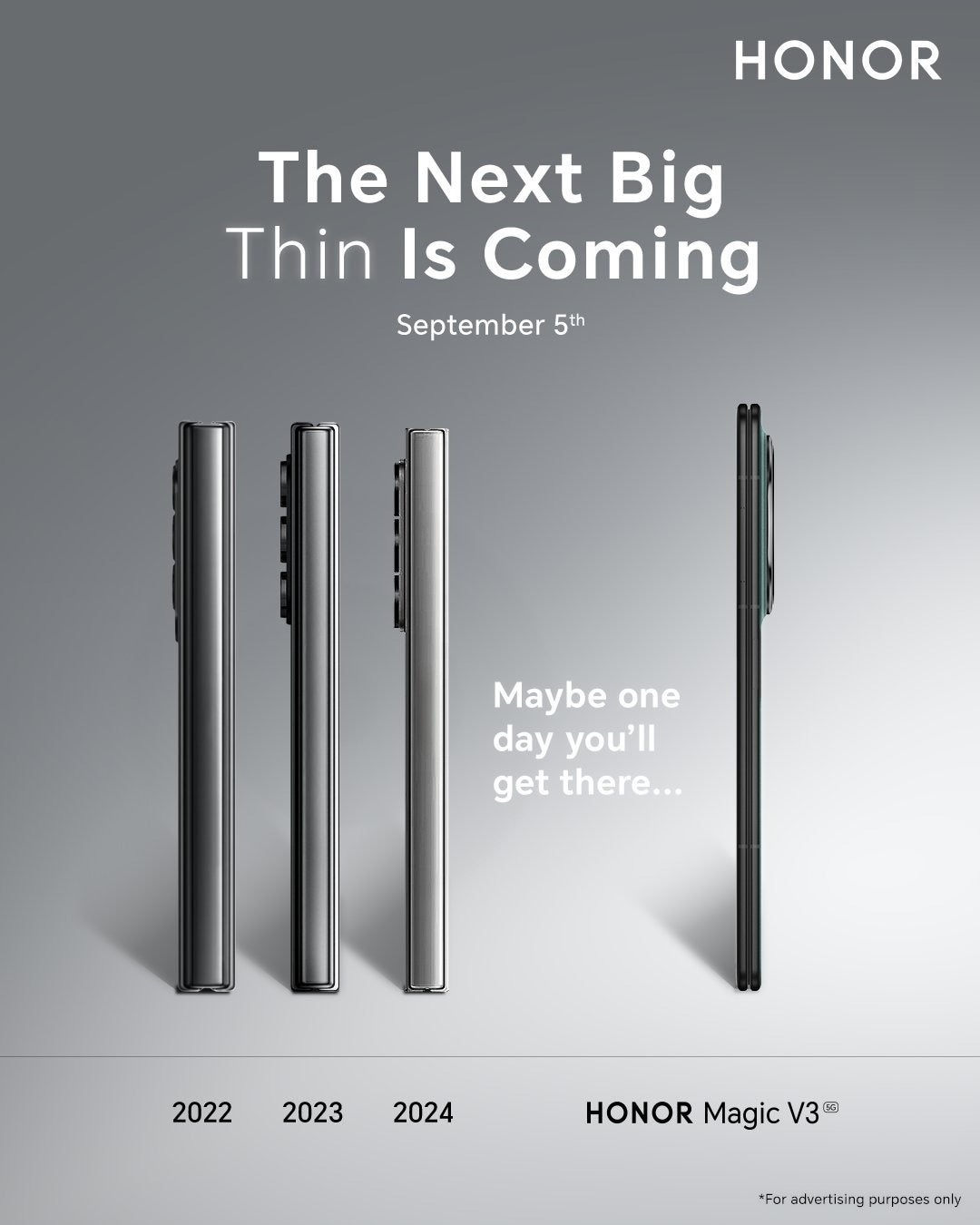Google’s second pass at making a
foldable phone is much more refined than the first. The new
Pixel 9 Pro Fold is now an integral part of the
Pixel 9 series. So much so, that Google is positioning it as the
best phone in the quartet, instead of relegating it to a separate
foldable phone line like last year’s
Pixel Fold model.
To position the
Pixel 9 Pro Fold as the top-shelf phone in the series, Google is resorting to a lot of pomp and bombast in the
presentation of its most expensive handset. The second
Pixel Fold was announced with a separate press release, where claims like “
the thinnest foldable phone” or “
the biggest ever display on a phone” abound.
Google’s Pixel 9 Pro Fold does not have the largest phone display
Nor is it the thinnest foldable phone
In the
Pixel 9 Pro Fold
overview, Google claims in bold letters that its 8-inch main screen panel is “the largest display on a phone,” while in the
press release it intermittently supplies similar claims:
Today, we’re announcing Pixel 9 Pro Fold, which brings our biggest ever display on a phone into an even thinner foldable device… Pixel 9 Pro Fold brings the best of a foldable form factor to life. It’s the thinnest foldable phone2 and has the biggest inner display ever seen on any mobile device.
Google Keyword, August ’24
It says that the Pixel 9 Pro Fold has the largest display on a phone right in the description. | Image credit – Google
Why the potato-patato Pixel 9 Pro Fold description? Saying that the 9 Pro Fold carries the “biggest ever display on a phone,” or the “biggest inner display ever seen on any mobile device” is beating around the bush as it does not. After all, these are the largest phone displays at the moment:
- Vivo X Fold 3 Pro – 8.03 inches
- Vivo X Fold 2 Pro – 8.03 inches
- Xiaomi Mix Fold 3 – 8.03 inches
- Xiaomi Mix Fold 2 – 8.02 inches
While it is not clear if Google rounds up the
Pixel 9 Pro Fold display diagonal from, say, something like the 7.98-inch display of the Xiaomi Mix Fold 4, or down from an 8.03-inch diagonal like on the latest
Vivo X Fold 3 Pro, it is clear that the newest
foldable phone by Google doesn’t have the “
largest display on a phone.”
The Pixel 9 Pro Fold ain’t “the thinnest foldable phone,” either, as that record belongs to the new Magic V3. Google’s second foldable handset comes in at 6.11 x 5.91 x 0.20 inches (155.2 x 150.2 x 5.1 mm), while the V3 is just 6.17 x 5.72 x 0.17 inches (156.6 x 145.3 x 4.35 mm) when opened.
When closed, the
Google Pixel 9 Pro Fold is 10.5 mm thick, against the Magic V3’s incredible 9.2 mm. At best, Google’s foldable is about the rumored thickness of the upcoming
Galaxy Fold Special Edition, though it is certainly thinner than the Z Fold 6.
Honor just
trolled Samsung about the thickness of its
Galaxy Z Fold 6 with the tiniest of apologies written on the slender hinge panel of the Magic V3, so claiming your phone is the thinnest with the largest display is a bit of a weird flex by Google.
One day, Samsung, one day | Image credit – Honor
The search giant, however, includes a fine print with each such claim to clarify what it means. These disclaimers range from “
among foldable phones in markets where Pixel Fold is sold excluding IN,” for the “largest display” claim, to our favorite “
among foldable phones in markets where Pixel Fold is sold excluding those in SG, UK, DE, IE and FR” for the “thinnest display” one.
Fair enough, but the
Google Pixel 9 series has one undisputable virtue that would have been a much more apt flex than the claims for thinnest or largest with an abundance of caveats and fine print.
The Pixel 9 series carriers the brightest phone displays we’ve tested
That is a flex without caveats
The new Google Pixel 9 phones, however, do indeed come with the brightest phone screens we’ve ever benchmarked. The Google Pixel 9 Pro XL pierced the 2,000 nits brightness barrier in our tests for the first time, while the Pixel 9 came in second with the whopping 1,970 nits brightness.
When we test the
Google Pixel 9 Pro Fold, it will probably repeat that feat, as we’ve observed this true peak brightness number trend with Google’s Pixel phones for a while. Granted, there are handsets like the
OnePlus 12 with
4,500 nits of peak brightness cites in the specs, as opposed to Google’s 3,000 nits or below. That is because they measure at a much lower average pixel level (APL), i.e. the amount of pixels lit up at full power during measurement.
Google says that its typical 1,800 “standard” brightness is “HDR brightness measured at 100% on-pixel ratio,” while “peak brightness [is] measured at 5% on-pixel ratio,” i.e. it tests the peak at 5% APL while the OnePlus 12 couldn’t hit its advertised 4,500 nits even at 1% APL, but only measures 1,630 nits at a maximum.
In short, Google does have the best phone displays in a certain metric on its Pixel phones, it’s just not the one it advertises as it probably thinks that “largest” or “thinnest” with conditions would be way more impressive as a marketing tool than “brightest” without all the fine print.







